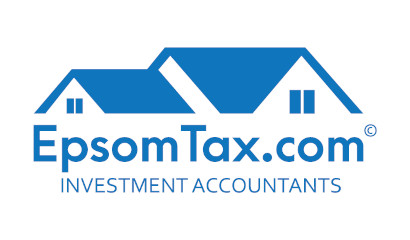WHAT’S MY RISK PROFILE?
Oct 27, 2024
What’s my risk profile? Why does it matter? When it comes to investing, determining your risk profile is essential. It guides your investment strategy by helping you align with your financial goals, capacity, and comfort levels. This article will explore what a risk profile is, the factors that shape it, and how you can assess and manage your risk effectively. 

What is a Risk Profile?
A risk profile identifies how much risk you can tolerate as an investor, considering various factors such as your personal financial situation and attitude towards uncertainty. Every investment carries some degree of risk, from low-risk options like government bonds to higher-risk alternatives such as stocks or real estate. Understanding where you fit on the spectrum allows you to make informed choices that suit your circumstances. Risk profiling evaluates three critical components:- Risk Required: The level of risk necessary to meet your financial goals within the resources you have.
- Risk Capacity: How much risk you can reasonably afford to take without jeopardizing your financial stability.
- Risk Tolerance: The amount of risk you are comfortable with emotionally and psychologically.
The Importance of Knowing Your Risk Profile
Why should you bother determining your risk profile? Here are some key reasons:- Guides Investment Decisions: Your risk profile influences whether you invest in shares, managed funds, real estate, or a mix of assets.
- Helps Avoid Emotional Investing: Knowing your tolerance helps prevent impulsive decisions, especially in volatile markets.
- Ensures Financial Goals Are Achievable: Aligning your investments with realistic expectations improves the chances of achieving long-term goals.
- Minimizes Stress: When your investments match your comfort level, you experience less anxiety about market fluctuations.
Factors That Influence Risk Tolerance
Several factors shape your risk profile. Here’s a closer look at the most significant ones:1. Age
Younger investors often have more time to recover from market downturns, allowing them to take on higher-risk investments. Older investors nearing retirement may prefer lower-risk, stable investments to protect their savings.2. Investment Horizon
The length of time you plan to hold an investment matters. Short-term goals may require safer options, while long-term objectives can accommodate more risk since there’s time to ride out market volatility.3. Financial Situation
Your savings, income, and current financial obligations dictate how much risk you can afford to take. For example, someone with a high income and minimal expenses may have a higher risk capacity.4. Knowledge and Experience
Investors with more experience in financial markets tend to have a better understanding of risks, making them more comfortable with certain types of investments.5. Emotional Comfort with Risk
Some people are naturally more comfortable taking risks, while others prefer to avoid uncertainty. This psychological factor significantly impacts your investment strategy.Types of Risk Profiles
Investors generally fall into three categories based on their tolerance and capacity for risk:1. Conservative
- Characteristics: Prefers safety and stability, willing to accept lower returns.
- Investment Examples: Bonds, cash deposits, term deposits.
- Ideal for: Individuals nearing retirement or with short-term financial goals.
2. Moderate
- Characteristics: Seeks a balance between risk and reward, comfortable with some market fluctuations.
- Investment Examples: A mix of bonds, shares, and managed funds.
- Ideal for: Investors with a medium-term horizon who want moderate growth.
3. Aggressive
- Characteristics: Focuses on high returns, willing to tolerate significant market volatility.
- Investment Examples: Shares, real estate, and other high-growth assets.
- Ideal for: Younger investors with a long-term outlook and high-risk capacity.
Assessing Your Risk Profile
To accurately determine your risk profile, consider using tools like the NZFunds Risk Profiler. This online questionnaire provides insights into your risk tolerance by analyzing your financial situation, investment goals, and emotional comfort with risk.- Link to the Risk Profiler: Access the Risk Profiler
How to Align Your Investments with Your Risk Profile
Once you’ve identified your risk profile, the next step is to align your investment strategy accordingly. Here are some practical steps to achieve that:1. Diversify Your Portfolio
Regardless of your profile, diversification is essential. Spread your investments across different asset classes to reduce risk.2. Rebalance Regularly
Over time, the value of your investments will change, potentially altering the risk level of your portfolio. Regular rebalancing ensures your investments stay aligned with your goals.3. Adjust as Life Changes
Major life events—such as marriage, buying a home, or retirement—may affect your risk capacity and tolerance. Review your risk profile periodically to ensure it reflects your current situation.4. Seek Professional Advice
Consider consulting with a financial advisor who can help you select investments that match your risk profile and long-term objectives.FAQs about Risk Profiles
1. Can my risk profile change over time?
Yes, your risk profile is not static. Changes in your financial situation, goals, or market conditions can alter your capacity and willingness to take risks.2. What happens if I take on too much risk?
Overexposure to risk can lead to significant financial losses, especially if markets perform poorly. It’s essential to ensure your investments match your comfort level.3. What if I am too conservative?
Being overly cautious can limit your returns, potentially preventing you from reaching your financial goals. A balanced approach is often more effective.Conclusion
Knowing your risk profile is crucial for making informed investment decisions. It helps you balance risk and reward, align your investments with your goals, and avoid unnecessary stress. Whether you’re a conservative, moderate, or aggressive investor, understanding your attitude toward risk empowers you to manage your financial future effectively. If you’re unsure about your risk profile or need guidance on the next steps, EpsomTax.com can connect you with experts who specialize in investment planning. Contact us to explore your options and receive personalized advice.
More Info
Would you like more information or some help? Contact us to review your investment options. We’ll connect you with the right people!
Recent Posts
Pages
Useful Links
Services
Contact Details
Phone: 0800-890-132
Email: support@epsomtax.com
Fax: +64 28-255-08279
EpsomTax.com © 2021
